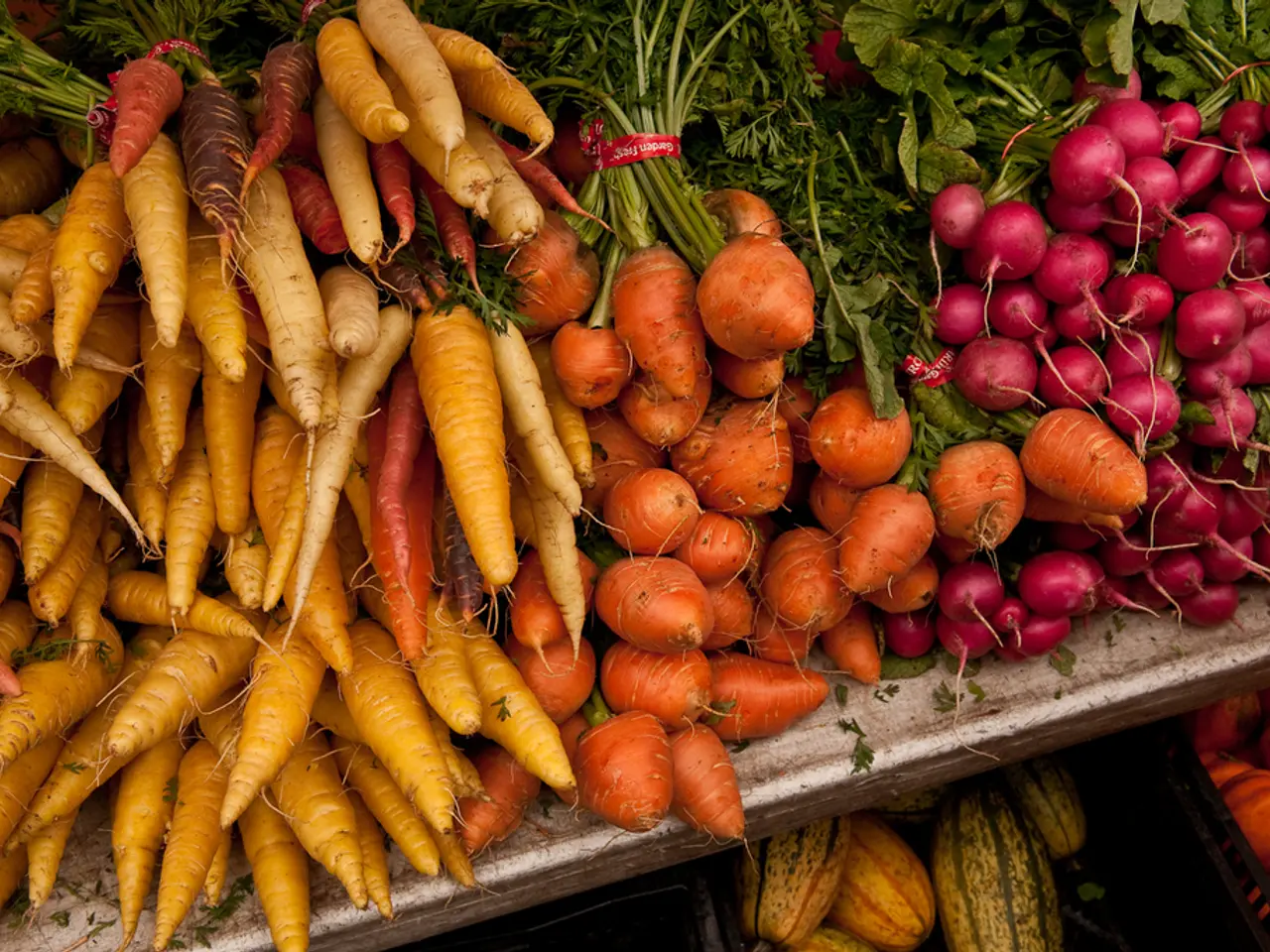Cultivate Healthy Soil for Thriving Veggie Production: Simple Guidelines
In this article, we'll walk you through the process of preparing a vegetable garden bed, from clearing the area to applying mulch and maintaining soil pH.
Clearing the Area
- Remove Debris: Start by eliminating all visible debris such as rocks, sticks, old plant material, and trash from the garden bed area. Pull out any weeds by hand or use a hoe to uproot them completely, ensuring roots are removed to prevent regrowth.
- Loosen the Soil: Use a garden fork or spade to turn over and loosen the soil. This aerates the soil and breaks up compacted areas, making it easier for roots to grow. Remove any remaining stones or large clumps as you dig.
- Thoroughly Remove Weeds: For persistent weeds, ensure you get the entire root system, which may require digging deeper or using a hoe to scrape the roots out. This helps prevent weeds from returning quickly.
- Level the Soil Surface: Use a garden rake to smooth and level the soil surface. This creates an even bed for planting and ensures proper drainage and uniform seed or plant placement.
Incorporating Organic Matter
- Enrich the Soil: Add compost, worm castings, or other organic fertilizers to enrich the soil with nutrients. Mix these amendments into the loosened soil for improved fertility and structure.
- Final Bed Shaping: Shape the bed edges neatly, either flat, raised, or mounded depending on your preference and drainage needs. Rake the soil one last time to ensure an even, clean surface ready for planting.
Mulching
Mulching is a crucial step in maintaining the health of your vegetable garden. Apply a layer of 2-4 inches thick, ensuring even coverage. Organic matter options include compost, rotted manure, grass or wheat straw, wood by-products, and more.
- Mulch Application: Spread the mulch evenly over the soil surface, avoiding the plant stems to prevent moisture buildup.
- Water Thoroughly: After applying the mulch, water it thoroughly to help it settle and start decomposing.
- Mulch Maintenance: Regular maintenance is essential to keep your mulch effective, replenishing the mulch as needed.
Soil pH Adjustment
Check the soil pH regularly-twice a year is ideal. The ideal pH level for vegetables is between 6 and 7, although most vegetables can tolerate a pH level of between 5.5 and 7.5.
- Acidic Soil: If your soil has a pH level below 7, it is acidic. In very acidic soil, bacteria can rot organic matter, resulting in plant damage. To balance acidic soil, add lime, dolomite, or poultry manure.
- Alkaline Soil: If your soil has a pH level over 7, it is alkaline and will be low on nutrients such as phosphorus, iron, and manganese. To increase the acidity of alkaline soil, you can add compost, manure, leaf matter, or mulch.
Raised Beds and Mulch Layers
Use permanent raised beds to improve drainage and keep foot traffic out of the growing area. No more than 4 inches of organic matter should be added to the beds.
Avoid compacting mulch layers to allow for water and air movement within the soil. Minimize tilling and spading to maintain soil health.
By following these steps, you'll create a thriving vegetable garden that's rich in nutrients, well-drained, and free of weeds. Happy gardening!
- To cultivate a healthy garden while promoting an eco-friendly lifestyle, consider incorporating organic materials such as compost or worm castings into your home-and-garden's vegetable garden, promoting soil health and improving its structure.
- Regularly maintain mulch layers in your home-and-garden's vegetable garden to provide a consistent source of nutrients, conserve moisture, and prevent weed growth, further contributing to your garden's health and aesthetics.




